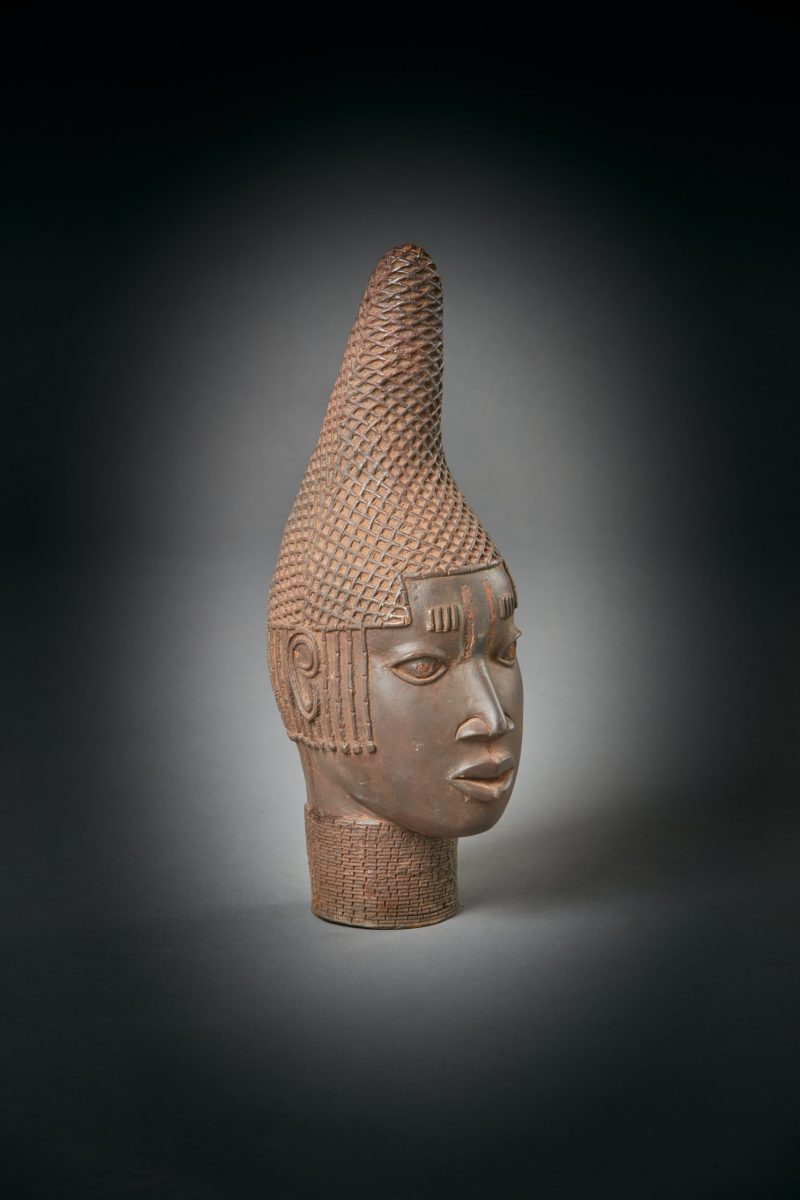Benin: Commemorative Bronze Head of Queen Idia
Benin: Commemorative Bronze Head of Queen Idia Cirça 16th century Bronze 18 x 5 x 7 in 46 x 13 x 18 cm Benin people; Nigeria, West Africa. This is a commemorative bronze head from medi Benin that probably represents Queen Idia, who was a powerful monarch during the early 16th century at the Benin court. Royal ancestral commemorative altar artifacts were kept in shrines of the palace of the oba (king) of Benin. Who worked as caretaker of the shrines and chief-priest of the cult of royal ancestors, officiates in rites invoking the protection of his ancestors. During his reign, he would had a portrait head commissioned of his mother Idia. The lost-wax casting process is a technique used by Benin sculptors to form the shape of the effigy head in a heat-resistant clay-core. This core is then covered with a layer of wax, in which the sculptor models, carves, and incises an image. Secondly, a thin layer of finely ground liquid clay is painted over the wax model then covered with increasingly thicker layers of clay. When the clay is completely dry, the assembly is heated to melt out the wax leaving an empty image or mold of the sculpted image of the head; for the hot molten metal to be filled in where the wax was and hot metal is poured into the mold. The sculptor must turn the complete assembly upside down to pour the hot molten metal, which is generally a mixture of copper alloys or brass. When the molten metal has cooled, the outer clay casing and inner clay core are broken to remove the casted sculpture or head. Provenance: This artifact is an extremely rare and important archeological find from the Benin civilization. The époque of the Benin civilization is presumed to be from the classic period to between the 13th–16th centuries. The results of thermoluminescence testing (report number 15R030519) conducted by the Kotalla Laboratory research facilities in Germany reports that sampling taken from the core of the cast and on the inside of the nose and eyes shows that this artifact was last fired into its present construction approximately 460-500 years ago, with an actual date reported as 1531 AD, which is consistent with the suggested period of the Benin civilization. and later purchased by Maxwell Price
